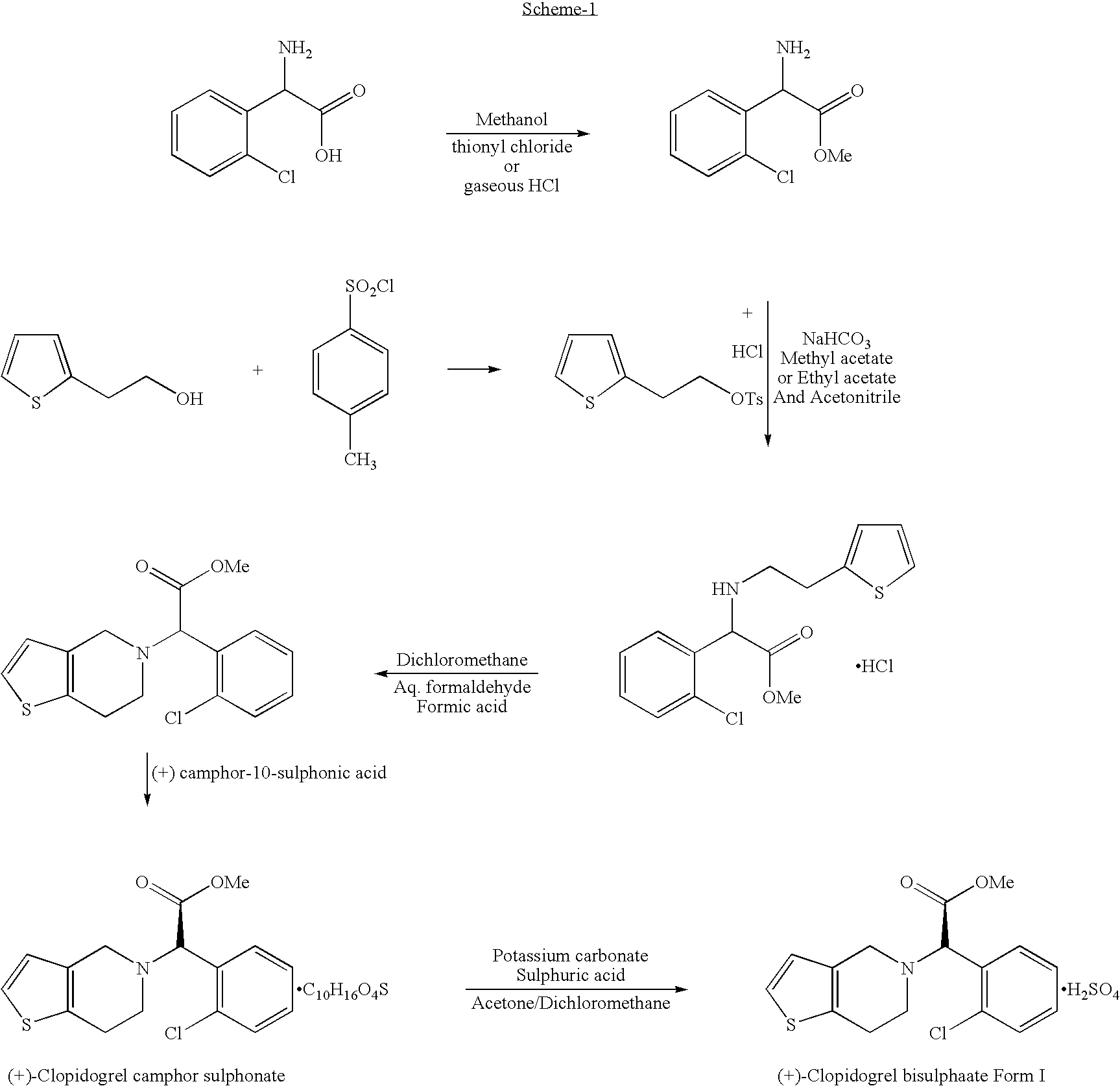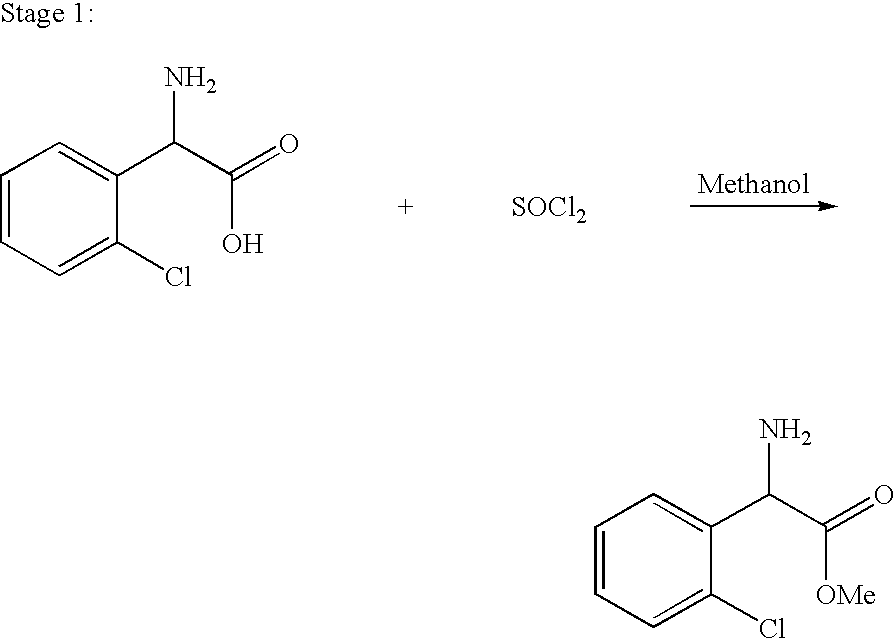Process for preparation of clopidogrel bisulphate form-1
- Summary
- Abstract
- Description
- Claims
- Application Information
AI Technical Summary
Benefits of technology
Problems solved by technology
Method used
Image
Examples
example 1
[0033]2-chlorophenyl glycine methyl ester: Alpha amino(2-chlorophenyl)acetic acid (100 Kgs) is taken along with methanol (100 lit) and cooled to 0-5° C. Thionyl chloride (98 Kgs) was added to this in 2 hours at 0-5° C. The mass was heated slowly to 50-55° C. and maintained for 6 hours. The excess thionyl chloride along with the solvent are distilled off under reduced pressure. Water (450 lit) was added to the residue and stirred for 1 hour. The aqueous solution was washed with toluene to remove unwanted impurities. The pH of the aqueous layer was adjusted to 7.0-7.5 with liquor ammonia. The neutral aqueous layer was extracted with dichloro methane in 2 lots of 250 lit each. The organic layer was distilled to recover the solvent under educed pressure. 95 Kgs of 2-chlorophenyl glycine methyl ester was obtained as oily residue. The residue was used as such for the next step.
example 2
[0034](+) tartrate salt of 2-chlorophenyl glycine methyl ester: Methyl alpha amino(2-chlorophenyl)acetate (100 Kgs) was dissolved in acetone (72 lit). This solution was added to a suspension of L(+)-tartaric acid in methanol (400 lit) at 30-35° C. The reaction mass was stirred for 12 hours. The mass was cooled to 20-22° C. when solid was observed. The mass was again heated to 50-55° C.; kept for 2 hours and cooled again to 20-22° C. An aliquot sample was taken and tested for the melting range and enantiomeric purity. The process of heating and cooling was repeated for 8-10 times till the desired enantiomeric purity is achieved. (>99%). 87 Kgs of (+) tartrate salt of 2-chlorophenyl glycine methyl ester was obtained with enantiomeric purity of 99.0% and above.
[0035][α]D / 20=+95.5° (c=1 in methanol)
[0036]M.P.=167 to 170° C.
example 3
[0037](+)-2-chlorophenyl glycine methyl ester: (+) Tartrate salt of 2-chlorophenyl glycine methyl ester (90 Kgs) was mixed with water (450 lit) and treated with ammonia solution (20%; 45 lit) till the pH of the reaction mass in the range of 7.0-7.2. Dichloromethane (270 lit) was added and stirred for 30 minutes. The organic layer was separated and the aqueous layer was extracted with dichloromethane (50 lit) twice. The organic layers are combined and distilled the solvent under reduced pressure to obtain the product, (+)-2-chlorophenyl glycine methyl ester (47 Kg) as oily residue.
PUM
 Login to View More
Login to View More Abstract
Description
Claims
Application Information
 Login to View More
Login to View More - R&D
- Intellectual Property
- Life Sciences
- Materials
- Tech Scout
- Unparalleled Data Quality
- Higher Quality Content
- 60% Fewer Hallucinations
Browse by: Latest US Patents, China's latest patents, Technical Efficacy Thesaurus, Application Domain, Technology Topic, Popular Technical Reports.
© 2025 PatSnap. All rights reserved.Legal|Privacy policy|Modern Slavery Act Transparency Statement|Sitemap|About US| Contact US: help@patsnap.com



